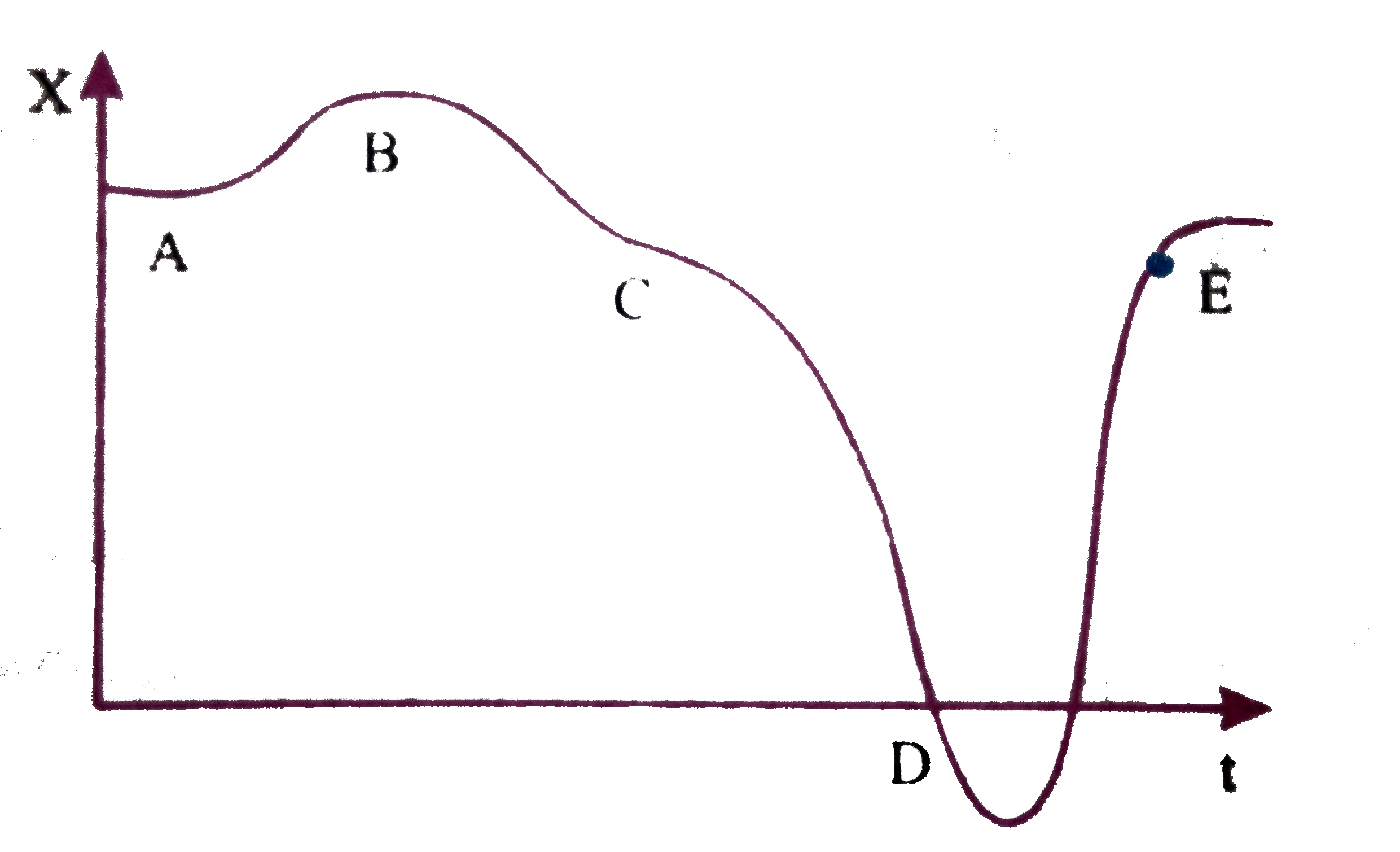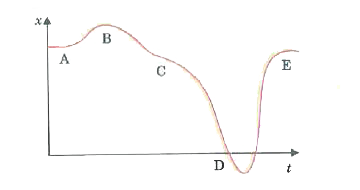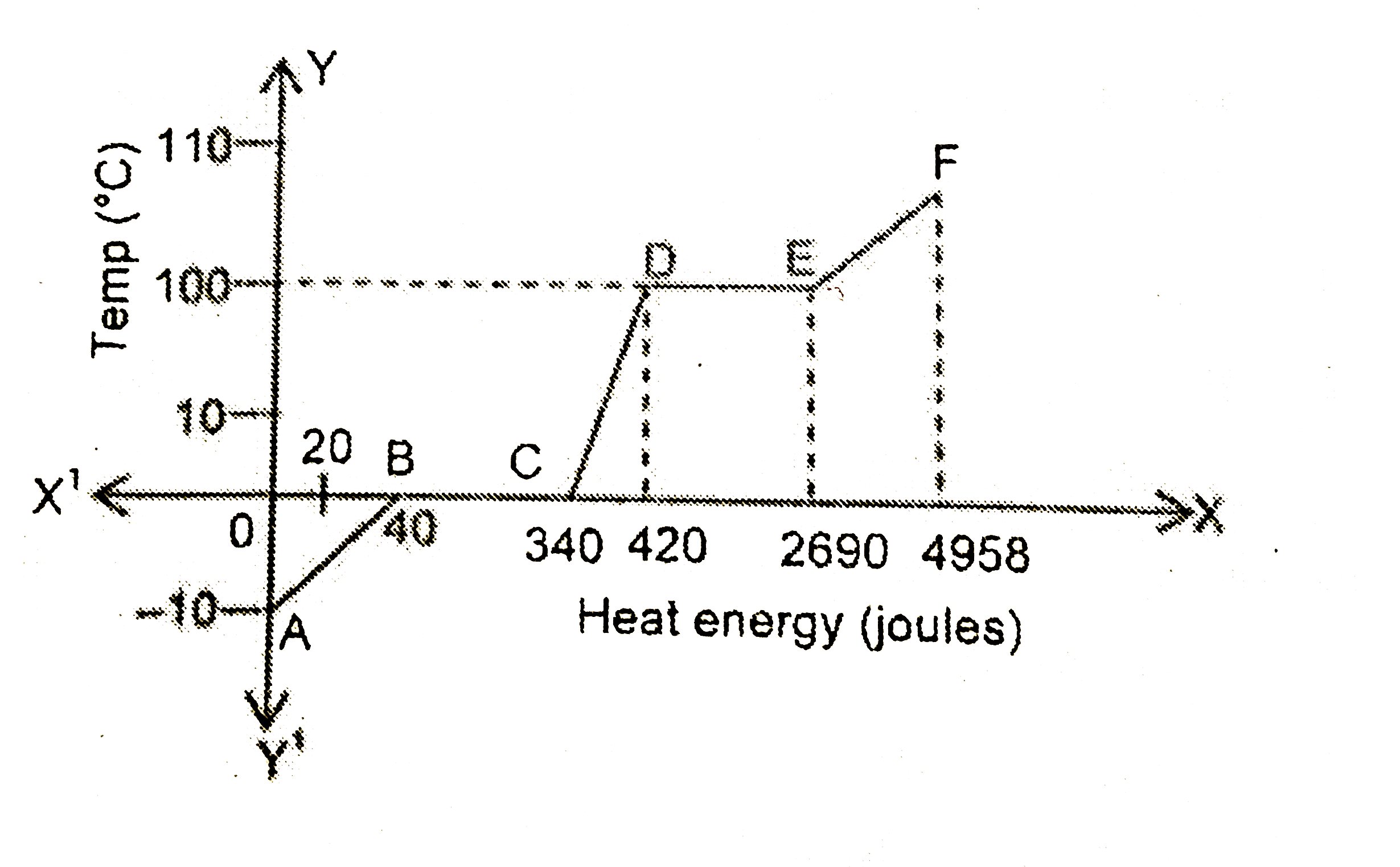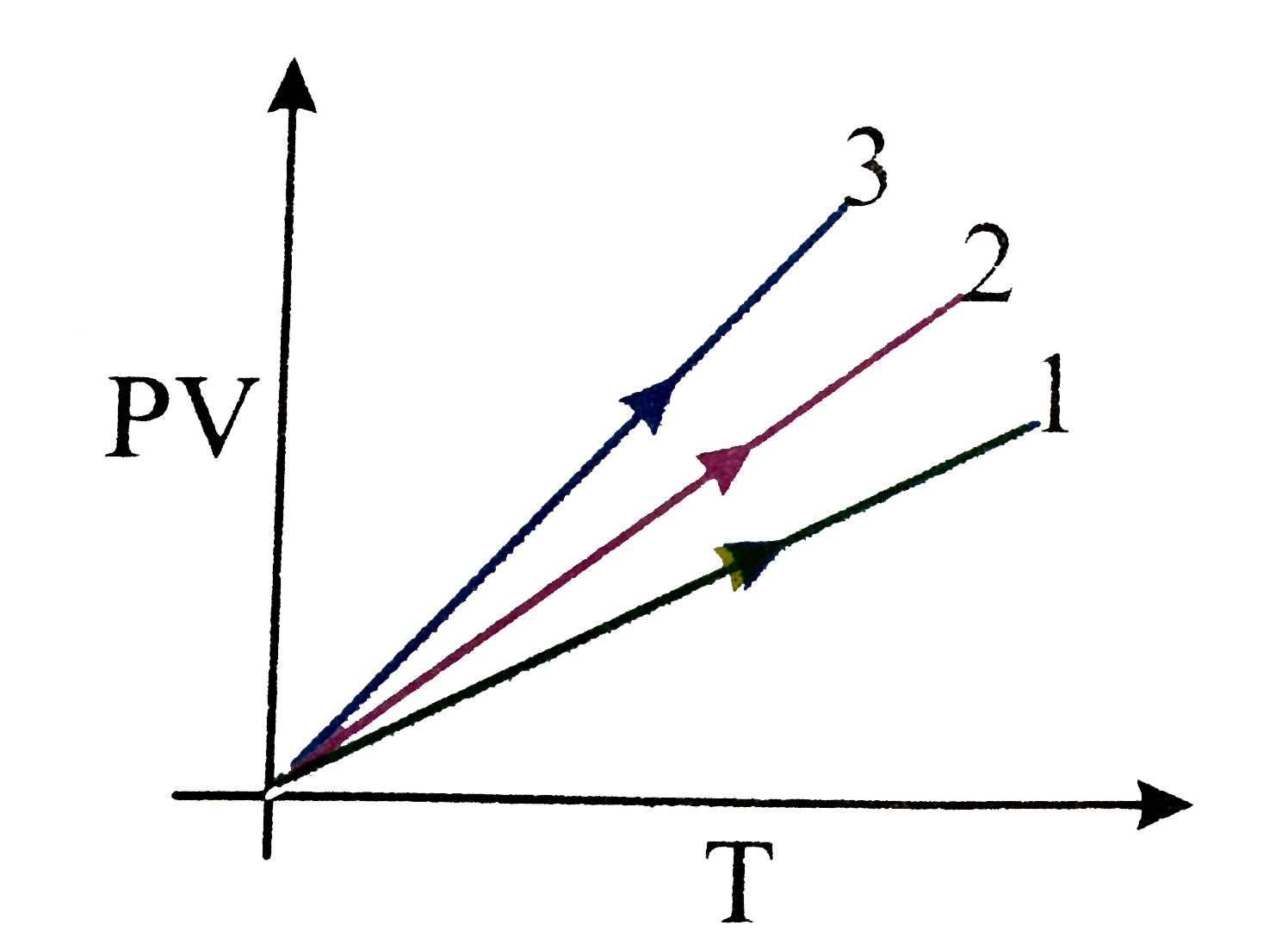
A graph of x versus t is shown in figure. Choose correct alternative from below.
The particle was released from rest at
At (B) the acceleration
At (C), the velocity and the acceleration vanish .
Average velocity for the motion between (A) and (D) is positive
The correct Answer is:A, C
From graph , when , the particle is released from rest at (A), hence
As, (B) the graph is parallel to time axis hence velocity is constant there. Thus accleration (A) is zero. AT (C ), the graph changes slope, where velocity and accelerationn vanish. ltbRgt Average velocity for motion between (A) and (D) is negatve because the value of (x) is dectrasing with tiem (t0. The slope of graph (which represents speed) is more at (D) than at (E). Therefore, speed at (D) is more than that at (E).
Topper's Solved these Questions
- BOOK - PRADEEPCHAPTER - KINEMATICSEXERCISE - 2 NCERT multiple15videos
KINEMATICS
- BOOK - PRADEEPCHAPTER - KINEMATICSEXERCISE - 3 NCERT multiple161videos
KINEMATICS
- BOOK - PRADEEPCHAPTER - KINEMATICSEXERCISE - 4 Fill in the blanks11videos
KINEMATICS
- BOOK - PRADEEPCHAPTER - GRAVIATIONEXERCISE - Assertion-Reason Type Questions19videos
GRAVIATION
- BOOK - PRADEEPCHAPTER - LAWS OF MOTIONEXERCISE - Assertion- Reason Type Questions17videos
LAWS OF MOTION
Similar Questions
Knowledge Check
- Question 1 - Select One
A graph of x verus t is shown in the figure given below. Choose correct alternatives from below.
 AThe particle was released from rest at t = 0 .BAt B, the acceleration a>0 .CAt C, the velocity and the acceleration vanish .DAverage velocity for the motion between A and D is positive .
AThe particle was released from rest at t = 0 .BAt B, the acceleration a>0 .CAt C, the velocity and the acceleration vanish .DAverage velocity for the motion between A and D is positive . - Question 2 - Select One
A bar magnet is moved over a steel bar as shown in the figure.
Choose the correct alternative from the following
 AThe end x becomes north pole if 'p, is south pole whne moved from the end x to y.Bthe end y will become a south pole if p is south pole and moved from the end y to x.Cthe end x will be a south pole if 'p' is a south pole and moved from x to yDboth (B) and (c)
AThe end x becomes north pole if 'p, is south pole whne moved from the end x to y.Bthe end y will become a south pole if p is south pole and moved from the end y to x.Cthe end x will be a south pole if 'p' is a south pole and moved from x to yDboth (B) and (c) - Question 3 - Select One
A bar magnet is moved over a steel bar as shown in the figure.
Choose the correct alternative from the following
 AThe end x becomes north pole if 'p' is south pole when moved from the end x to yBthe end y will become a south pole if p is a south pole and moved from the end y toxCthe end x will be a south pole if 'p' is a south pole and moved from x to yDBoth (b) and (c)
AThe end x becomes north pole if 'p' is south pole when moved from the end x to yBthe end y will become a south pole if p is a south pole and moved from the end y toxCthe end x will be a south pole if 'p' is a south pole and moved from x to yDBoth (b) and (c)
Circuit as shown in figure below, choose the correct statement
 View Solution
View SolutionThe heating curve of a paritcular substance in solid state is as shown in the figure .choose the correct alternative

The porition QR of the graph indicatesView SolutionThe heating curve of a paritcular substance in solid state is as shown in the figure .choose the correct alternative

The porition QR of the graph indicatesView SolutionThe heating curve of a particular substance in solid state is as shows in the figure.Choose the correct alternative

The change of state in the graph is represented by ________part.View SolutionThe heating curve of a particular substance in solid state is as shows in the figure.Choose the correct alternative

The change of state in the graph is represented by ________part.View Solution


